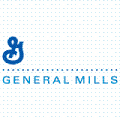Business Optimization
Accredited Consulting Service for Mr. Erickson MBHRM BSEE Accredited Senior Consultant (ASC)
Executive Summary Video
The Appleton Greene Accredited Consultant Service (ACS) for Business Optimization is provided by Mr. Erickson and provides clients with four cost-effective and time-effective professional consultant solutions, enabling clients to engage professional support over a sustainable period of time, while being able to manage consultancy costs within a clearly defined monthly budget. All service contracts are for a fixed period of 12 months and are renewable annually by mutual agreement. Services can be upgraded at any time, subject to individual client requirements and consulting service availability. If you would like to place an order for the Appleton Greene Business Optimization service, please click on either the Bronze, Silver, Gold, or Platinum service boxes below in order to access the respective application forms. A detailed information guide for this service is provided below and you can access this guide by scrolling down and clicking on the tabs beneath the service order application forms.
Client Telephone Conference (CTC)
If you have any questions or if you would like to arrange a Client Telephone Conference (CTC) to discuss this particular Unique Consulting Service Proposition (UCSP) in more detail, please CLICK HERE.
Bronze Client Service
Monthly cost: USD $1,500.00
Time limit: 5 hours per month
Contract period: 12 months
SERVICE FEATURES
Bronze service includes:
01. Email support
02. Telephone support
03. Questions & answers
04. Professional advice
05. Communication management
To apply – CLICK HERE

Silver Client Service
Monthly cost: USD $3,000.00
Time limit: 10 hours per month
Contract period: 12 months
SERVICE FEATURES
Bronze service plus
01. Research analysis
02. Management analysis
03. Performance analysis
04. Business process analysis
05. Training analysis
To apply – CLICK HERE
Gold Client Service
Monthly cost: USD $4,500.00
Time limit: 15 hours per month
Contract period: 12 months
SERVICE FEATURES
Bronze/Silver service plus
01. Management interviews
02. Evaluation and assessment
03. Performance improvement
04. Business process improvement
05. Management training
To apply – CLICK HERE
Consultant profile
Mr Erickson is an approved Senior Consultant at Appleton Greene and he has experience in management, human resources and production. He has achieved a Master in Business Human Resource Management and a Bachelor of Science in Electrical Engineering. He has industry experience within the following sectors: Construction; Consultancy; Consumer Goods; Food & Beverage and Manufacturing. He has had commercial experience within the following countries: United States of America and Canada, or more specifically within the following cities: Minneapolis MN; Kansas City MO; Denver CO Salt Lake City UT and Edmonton AB. His personal achievements include: grew $12M business to $40M; implemented financial management control processes; trained founder to be CEO; reorganized operating departments improving throughput and established performance improvement processes. His service skills incorporate: business strategy; organizational development; business systems; leadership development and financial management.
To request further information about Mr. Erickson through Appleton Greene, please CLICK HERE.
Executive summary
Business Optimization
Business Optimization is a systematic approach that improves overall business capacity allowing companies to maximize profits while delivering the highest quality products or services. Business capacity is defined as the maximum amount of products or services a business can effectively produce over a given period of time. Business Optimization begins by helping owner(s) or top executive(s) define the amount of profits they want and then establish strategic and financial plans to create these profits. As these plans are developed, timetables and milestones are established. Once milestones are established the business capacity required to reach the first milestone is defined.
Every business can be sectioned into three major areas, sales, operations and finance. A business can be visualized as three connecting sections of pipe where the diameter of each section of pipe is that section’s capacity. In other words, the sales section has a certain diameter as does the operations section and the finance section. The process of Business Optimization involves balancing the capacity through all three sections or making the diameters of all three sections the same time while at the same making them large enough to reach the business goals previously set. Capacity analysis is used to identify the smallest diameter section, analyze work flow through that section and expose the bottlenecks or constraints in that section. Constraints are caused from inadequate facilities, employee skills, equipment and / or processes. Based on the type of constraint identified, project teams are formed. Each team has the task of removing their assigned constraint or constraints as cost effectively as possible.
Business Optimization is a continuous improvement process that focuses on balancing business capacity through all three sections. It involves continually analyzing and improving business capacity in each “section of pipe” until the business hits established milestones. As overall capacity increases, new goals, timetables and milestones are set. This cycle continues as long as the business owner(s) or top executive(s) want to improve their business beyond where it is. The results of Business Optimization are not only maximized profits, which come from efficiently delivering the highest quality products or services but also a more cohesive and productive work force, smoother operations, and reduced stress of business leadership.
Service Methodology
In summary, Business Optimization is a method that brings the right people together at the right time to progressively solve the right problems in order to improve the overall performance of a company. The first step is to establish corporate profit goals. This involves the business owner(s) or top executive(s) plus those they want involved at this level. Profit goals are based on defining the amount of money needed to pay down debt, the amount needed to invest back into the business and the amount needed to provide an acceptable return to the owner(s). The second step is to develop strategic, financial and tactical plans to reach the profit goals set above. Once these plans are developed then measurements, timetables and milestones are established. This involves the same group as above but may also include other key personnel as appropriate. The third step is to do the work necessary to reach the milestones. This involves key personnel throughout the organization starting with the department heads of the sales, operations and finance departments plus others who the department heads want involved. This group evaluates the business level that each department can effectively handle and still produce the desired quality of products, services and customer support. Using capacity analysis techniques, the group decides on which department has the lowest capacity and which has the highest.
Once the lowest capacity or constraining department is identified a project team is formed with key personnel within that department. A team leader is established, which is usually the department head. This team is chartered with looking at all the functions within the department and identifying the issue(s) that are creating bottlenecks. This team then develops ways to solve the issue(s) in order to remove the bottlenecks. The team then determines the cost to implement. If the cost is within the confines of the financial plan the team implements the improvements. If not, it presents its recommendations to management for their direction. The team continues its efforts until the capacity of this department is equal to or greater than the department with the highest capacity. Once this department is no longer the constraining department a new project team is formed within the new constraining department and the above process is repeated. As the capacities of each department become balanced, the owner(s) or top executive(s) review the profit goals and if wanted, sets new profit goals. The Business Optimization process then begins again.
Service Options
Companies can elect whether they just require Appleton Greene for advice and support with the Bronze Client Service, for research and performance analysis with the Silver Client Service, for facilitating departmental workshops with the Gold Client Service, or for complete process planning, development, implementation, management and review, with the Platinum Client Service. Ultimately, there is a service to suit every situation and every budget and clients can elect to either upgrade or downgrade from one service to another as and when required, providing complete flexibility in order to ensure that the right level of support is available over a sustainable period of time, enabling the organization to compensate for any prescriptive or emergent changes relating to: Customer Service; E-business; Finance; Globalization; Human Resources; Information Technology; Legal; Management; Marketing; or Production.
Service Mission
Our service mission is to help owners or top executives of small and mid-sized businesses create the type of business they want by providing them with high quality, client focused services that result in improved and sustainable profits, improved ease of operations, reduced stress of business leadership, and increased customer satisfaction. We strive to utilize our expertise effectively in helping develop and implement business management methods and procedures that improve operations, sales, and the financial management area of client companies. The goal is to improve the bottom line performance, long term financial health, and marketable business value of client companies. We do this in a way that not only enhances profits and cash flow but also enhances employee relations and management practices. Everything we do is aimed at building efficient operations and business value, providing both short and long term benefits to our clients.
Service objectives
The following list represents the Key Service Objectives (KSO) for the Appleton Greene Business Optimization service.
- Profit Improvement
Profits and the required revenue to create these profits are two key measurements that indicate the health of any business. The challenge of any business is to achieve maximum profits from the revenue it generates. Profits are maximized when business capacity is fully utilized. In order for capacity to be fully utilized it must be balanced, meaning that the capacities of the sales, operations and finance functions are the same. Once these are in balance and capacity is fully utilized, incremental capacity increases can be made in each area to support profitable business growth. One of the most costly situations to any business is idle capacity. Excess capacity costs money, wastes resources and often creates workplace discontent. Most companies have excess capacity somewhere within the business and most companies have limited or constraining capacity somewhere within the business. The key to any profit improvement effort is to improve the processes that lead to the best, sustainable profit growth within a short period of time without creating a lot of disruption to current business requirements. The approach needs to grow the profits by making the whole business able to effectively reduce costs by making the processes within the business more efficient and to increase the capacity of the business to be able to handle higher revenue levels. Increasing revenue may increase the top line of a business but does not necessarily translate to increasing profits. In fact, focusing on just increasing revenue can create the opposite effect if profit improvement is not the driver behind the efforts to increase revenue. Improving profits through cost reductions alone can produce short term improvements but are limited when it comes to longer term business health. Again, the goal must be longer term sustainable profit improvement, and this has to come from a focused effort to improve both operating efficiencies and revenue. - Operating Efficiencies
One way to increase profits in a company is obviously to make that business more efficient so it produces higher levels of revenue at lower costs. This sounds very simplistic and intuitively apparent. However, before a business can operate efficiently the individual processes and systems within the business must be in sync and operating efficiently. In order to ensure that all processes and systems are in sync and operating efficiently, it is critical that each process and system operate effectively. Without first ensuring that a process or system is effective before making it efficient, the improvement effort will result in ineffective processes or systems simply becoming more ineffective. As processes and systems become more ineffective the business as a whole becomes more inefficient and costs go up and profits go down. The Business Optimization method forces people to look at the inner workings of a business. Looking at the inner workings of a business help people identify which processes or systems are missing and which are ineffective. After these are identified this method helps people develop and incrementally add missing processes and systems. It further directs efforts to first make ineffective processes effective and then make them more efficient. As more and more processes and systems are added or enhanced, the efficiencies of individual processes within a company improve. As these efficiencies improve so does the overall efficiency of the business. As the overall business operates more efficiently profits improve. - Revenue Growth
Another way to increase profits is to grow revenues. In order to grow revenues the business must have the capacity to produce the work required to achieve these revenues. Often times business owners or executives think that all they need to do is to produce more sales and profits will increase. This is not necessarily true, and in fact, the exact opposite often happens. In our model, a company is pictured as a series of connected sections of varying diameter pipe. The smallest diameter section is the bottleneck within the company. In order for a business to function properly, the amount of business that flows through the company must flow smoothly through the narrowest section. When flow is forced through a section that is too narrow, costs and operating disruptions go up. Waste, quality and delivery time issues, missed commitments, employee discontent, and the number of unsatisfied customers all increase. Therefore, in order to increase revenue properly and effectively, processes and systems within the business must be installed, enhanced or significantly changed in a way that gives a company the capacity needed to, not only effectively generate incremental revenue, but to generate this revenue in a way that produces incremental profits and business growth. To use the illustration of the above sections of pipe, each section must be close to the same diameter. If a section is too large, there is extra capacity in that part of the business and it needs to be better utilized by increasing the diameters in the other sections. If a section is too narrow, it is throttling back the entire business and its diameter needs to be increased. This is a continuous improvement process where the cost to increase capacity in one section is continually measured against the cost to maintain idle capacity in another and the impact the limiting section has on the overall business. Increasing revenues almost always is associated with increasing capacity somewhere within the business regardless of where the narrowest pipe section is located. - Employee Involvement
The heart and soul of any business is its people. Their skills in conjunction with the operating processes and systems are what create sales, produce and deliver products and services, and manage financial resources. The way employees are able to utilize their skills are seen in the way a business operates and the type of quality and service a company produces. When employees are restricted from properly using their skills, or they experience repetitive obstacles they become frustrated, anxious or angry. As frustration, anxiety or anger increase management time increases and focus is diverted away from the business of the business. Business performance suffers and customer satisfaction wanes due to quality and delivery issues. Almost always employee issues are caused by processes or systems that are missing, ineffective or inefficient. Employees are usually the best at seeing these issues because they experience them every day. Employees are a powerful resource and when involved can be made part of the solution creating a positive effect throughout the organization. The Business Optimization method involves employees at all levels throughout an organization. This develops shared visions and goals and creates teamwork and singleness of purpose with everyone involved. It is impossible to effectively manage people. Managers can only be effective at managing processes and systems. People are then managed by how they perform within established and defined processes and systems. Therefore it is critical that employees not only understand their role and where it fits within the business but that they become involved in the business optimization process. This way they become part of the solution as a team rather than part of the problem as individuals. When this happens, employee discontent significantly diminishes and business operations become smoother, more productive and easier to manage. - Leadership Development
Leaders are essential throughout any organization. Effective leaders at the top of an organization create a positive vision, culture and direction that everyone within the organization can rally behind. Effective leaders in middle management positions create confidence and loyalty in the people within their department. Effective leaders within the rank and file of an organization create strong teams that effectively identify and solve problems. The Business Optimization method steers an organization through the process of setting visions, goals and strategies, and then identifying and solving constraints within a business so that goals are accomplished. As visions, goals and strategies are set, and as constraints are identified and solutions developed, people with leadership tendencies emerge throughout the organization. A focus of the Business Optimization method is to mentor and train these people so that they become effective at leading groups of people. Owner(s) or top executive(s), middle managers and supervisors, and rank and file employees all require a different level of leadership skills. Leadership is different than management. Leadership is making sure the ladder is against the right wall and management is making sure the ladder is against the wall right. Whether a person is guiding a whole organization or a process improvement team, good leadership is needed. Therefore, one of the longer term and sustainable benefits companies receive from the Business Optimization method is the identification and develop of leaders throughout the organization.
Testimonials
Filmtec Corporation
”We brought Mr. Erickson in as a consultant to help us improve our operations during the early transition right after The Dow Chemical Company bought us. He quickly showed us his capabilities as he worked across multi-functional departments. He brought cohesiveness and a level of knowledge and expertise that were missing in the organization. Dow hired him full time after six months and made him Site Manager. He was an active part of the business management team which consisted of sales, marketing, and finance managers of Dow. This team was responsible for running and growing the business. He assimilated well into the team. He was an instrumental part of the team in improving our business capacity that helped the company grow by over 300% in less than five years. He interacted well with all levels of personnel, from Dow executives to the people on the floor. We appreciate all he did to help us make the purchase of FilmTec the success it was.”
Stormwater Risk Management, Inc.
”Mr. Erickson has helped our company immensely over the last year. He helped me step back from the daily grind of just running our business to define realistic strategies to grow our business. He first focused on the fundamentals of our business operations, such as cash management, sales, and financial goal-setting. Our foundation was not as solid as I thought it was and our weaknesses were keeping us from reaching our full potential. Steve’s persistent focus finally opened my eyes to how important mastering these fundamentals is to growing the business I want to have. One year later, we are on course for achieving our goals for growth in sales and profits by more than our 35% target. More importantly, I have regained my enthusiasm for running the business and feel like I am in control of our future. With respect to a return on our investment, he definitely exceeded my expectations.”
Bross Construction Company
” We are pleased with the results we see from Mr. Erickson’s efforts. He quickly understood our specific needs and worked diligently around our schedule and business requirements in a time effective manner. He helped us see areas where we needed improvement. He has provided coaching and has been instrumental in implementing changes in the way we manage our business. These changes are helping us improve upon our historical successes.”
International Sports Turf Research Center
”The procedures that Mr. Erickson helped us implement starting about 2 years ago have allowed us to look at our company in a much more business-like manner. I am a marketing person and just assumed that by increasing sales 10 to 12% each year that our profits would increase incrementally as well. I was wrong in assuming that increased sales related to increased income, in fact the reverse happened in our case. He warned me that this might happen. With procedures that we installed at his suggestion and guidance we were able to reverse this negative trend and are now on track to have our best year ever. I thank him again for all that he has done for me and my staff and look forward to an ongoing relationship.”
General Mills, Inc.
”Mr. Erickson served as Electrical Process Engineer in the Packaged Foods Operating Division corporate office and then as Electrical Construction Superintendent, Project Engineer, Sr. Production Supervisor, and Maintenance Manager at our Cedar Rapids, IA in the plant. He joined General Mills as his second job a year or two out of college. His major accomplishment was running the electrical construction part of a fast track expansion and then managing the installation of a new product production line within that expansion. His maturity at a young age and his ability to oversee up to 80 construction workers significantly contributed to completing the project on budget and three months ahead of schedule. This allowed General Mills to launch its new product nationally ahead of earlier projections.”
More detailed achievements, references and testimonials are confidentially available to clients upon request.
Industries
This service is primarily available to the following industry sectors:
Construction
The construction industry, as a whole is strong. There are geographical areas that are less strong and there are some that are extremely strong. Regardless, there are good opportunities for those companies that can price competitively, adhere to project schedules, and provide quality workmanship, while making high enough margins to maintain required levels of working capital. The construction industry can be broken into three main categories: Civil Engineering and Heavy Construction which include companies that work on large infra structure projects such as roads, highways, bridges, etc.; General Construction which include companies that build residential and commercial buildings; and Specialty Construction which include companies that have a special trade such as carpentry, electrical, plumbing and HVAC.
According to the Dodge Outlook Report and Robert Murray, Chief Economist with Dodge Data and Analytics, businesses are expanding and this is helping fuel the construction industry. Murray predicts “a rise in construction starts for commercial and institutional building accompanied by moderate improvements for housing and a stabilizing public works sector.” He further says that residential construction will be robust through 2019 and suggests that construction companies may want to take advantage of this situation now and into early 2017 because “it could be the time to go ahead with projects”. Unemployment in the construction industry is the lowest it has been since 2007. This is putting pressure on firms who are trying to hire. It is also putting upward pressure on salaries and wages. Though any size company can be impacted by these issues, the smaller firms are more vulnerable. Smaller companies have to compete against larger firms for employees. Their vulnerability comes in large part because they feel more and more pressure to provide health care benefits. These benefits are becoming more expensive and can add significant costs to an already cost sensitive and competitive situation. The smaller companies also face the challenges of understanding and being able to control miscellaneous expenses while maintaining adequate cash flow and working capital.
Consultancy
As the world recovers from the recent recession, the use of external consults is growing. As market demand increases in existing and emerging markets those companies that provide the highest value product and services will thrive. Those that do not will remain mediocre and slowly decline until they eventually go out of business. Many business owners and executives recognize this but struggle with how to effectively make the changes and improvements necessary to insure that their company is one of the ones that thrive. Most companies do not nor should they have a pool of available employees with the right expertise, time or ability to focus their efforts in areas other than their current responsibilities. Providing this expertise and focus is the major reason companies use external consultants.
Consultancies that are the most in demand are those that can help companies enhance business systems, improve efficiencies and reduce costs. These improvements allow companies to increase revenue, profits and market share as markets improve and as competition grows. Successful companies are those that provide higher value to the consumers of their products or services. This means having the right business systems, balanced capacities that are in sync with market demands, a thorough understanding of the market in which they compete, faster cycle times, better customer support, and higher product or service value than their competitors. The most cost effective way to accomplish the above is usually through the use of outside expertise or consultants. The right consultant can quickly help owner(s) and top executive(s) improve their business because they have an expertise and skill set that is usually missing in a company, they can relieve people within the organization from the need to focus on issues outside of their normal daily business requirements, and they can be engaged as long as necessary without the expense of hiring or firing. The right consultant not only produces “hard”, quantifiable results such as higher revenues, larger profits, and stronger cash flow but they also produce “soft” results such as improving the ease of operations and reducing stress of management and employee issues.
Consumer Goods
The Consumer Packaged Goods industry has had strong growth over the past 25 years due to new products and technologies. This has led to increasing margins and a high return to shareholders which has averaged 10% per year, outperforming the S&P 500. This is because companies have invested in innovation, supply chain efficiencies and cost reductions, R&D, Sales and Marketing, Procurement, Manufacturing, and Distribution. These investments have led to a 50% increase in the number of sku’s in just the past seven years. Past successes, however, do not guarantee future successes. Global demand, emerging markets, local production, and the impact from the Internet will reshape the way products are sold, produced and distributed. Companies that want to enter this market, increase their market share, or just maintain their position in the market will most likely need a different approach to their business other than what has worked in the past.
Over the next ten years the industry will see a billion new consumers in emerging markets, an increase in the number of consumers that purchase online, a growing number of consumers that are more interested in balancing price with quality and benefits, an aging population, and more volatility in the cost of raw materials. Companies that are able to increase their competitive advantage over where they are today will have the greatest ability to impact the industry. In order to do this, they will need to have the business capacity and systems that give them the ability to anticipate new opportunities and then take advantage of those opportunities as soon as they appear. Optimizing the way a business operates from understanding the market, to product and service development and positioning, sales, operations, and financial management will become even more critical than in the past. Those companies that do the best at balancing capacities, shortening cycle times, improving quality and perceived value, and having exemplary customer support will be those that impact the industry the greatest and will thrive from new opportunities.
Food & Beverage
The Food and Beverage industry is large and diverse. The focus of this article is therefore limited to the private label food processing companies since the needs of these types of companies align more closely with the Unique Service Proposition of this consultant. The demand for private labeled products has grown significantly over the past ten years and according to Con Agra, America is nowhere close to reaching a ceiling on this demand. Feedback from executives in this section of the industry suggest that leading companies are developing the mindset of being “first-to-market” and moving away from the traditional “fast-follower” game plan. This demand is due in large part to the increasing quality of private labeled products in conjunction with producers being able to price their products significantly below national brands. Grocers receive an average margin of 35% from private labeled store brands compared to an average margin of 25.9% from national brands. Studies from the Food Marketing Institute conclude that retailers are very interested and would “love to see continued growth in private label as the economy gets back on track”.
Many private label companies are small to mid-sized family owned businesses. The lack of capital and the many resources available to the larger national brand companies is a disadvantage to these smaller companies. However, being smaller gives the advantage of being able to shift gears more quickly than the larger companies. Larger companies tend to be more set in their ways and adhere more closely to their historical operating philosophies than smaller, more flexible companies. This flexibility will allow the smaller companies to take greater advantage of changes in the market place. The growing demand for private labeled products provides more sustainable future opportunities than did the boom-bust cycle of the past 30 years. Smaller food processors with excess capacity will have the ability to react quickly when they see an opportunity. Larger companies are looking to have greater capacity and flexibility through the use of smaller companies. This presents opportunities for smaller companies to produce both private labeled products as well as contract manufacturing for national brands.
Manufacturing
The manufacturing sector continues to focus on productivity and efficiencies. This trend will continue as manufactures increase their automation to reduce labor, look for more ways to outsource as a way to increase capacity and shorten cycle times without spending capital or committing to higher overhead costs, and form strategic alliances to optimize core competencies. Another trend that is developing is “reshoring” US manufacturing. Reshoring is when US manufacturers bring jobs that had been outsourced to other countries back to the US. The reason this is happening is because some US companies are experiencing higher than anticipated costs from foreign producers and logistical difficulties due to longer delivery times and communication issues. Understanding the nuances of the market place, customer needs, and operating requirements is critical to any company that wants to remain competitive. The most successful companies are going to be those that are able to align their business systems and product offerings with market requirements. Increasing automation to reduce costs, shorten cycle times, and improve consistency of quality and on time deliveries will remain top priorities.
A growing part of larger companies’ strategies is outsourcing through contract manufacturers or forming strategic alliances with smaller manufacturers for private labelling. Smaller companies that have a history of innovation, productivity, responsiveness, and success in meeting customer requirements are the companies with whom larger companies will want to align. Since businesses can only operate within their own system constraints, another important trend is the increase in companies using system analysis to understand more fully the areas that are creating cost, waste or capacity constraints. System analysis provides a deeper understanding of what makes a business function and what causes areas to underperform. The understanding that comes from systems analysis helps companies better predict output requirements, lower cost of goods and inventory levels, and improve product quality, technology transfer and regulatory compliance. Another benefit from system analysis is a better understanding of the whole supply chain which allows a company to work around issues that can develop from a natural disaster, thus minimizing the risk of business interruptions. Automation will bring a higher level of technical sophistication. Manufacturers will require more highly skilled technical service support to deal with increased complexity. This means that companies will have an increasing need for support services such as training, maintenance, and operational processes and services.
Locations
This service is primarily available within the following locations:
Dallas TX
Dallas is part of the Dallas Fort Worth (DFW) Metropolitan Area which includes about thirty surrounding municipalities. The headquarters of nine corporate Fortune 500 companies are located in Dallas and 21 are located within the DFW region. These companies include Texas Instruments, Kimberly Clark, and Southwest Airlines. The metropolitan area is now the fifth largest economy in the United States. The main industries of the area are banking, commerce, telecommunications, technology, energy, healthcare and medical research, and transportation and logistics. It contains the third largest number of Fortune 500 company operations in the nation and includes the Dallas Federal Reserve Bank, operations centers for JP Morgan Chase, Citicorp, and Capital One as well as major distribution centers for Amazon, Frito-Lay, Whirlpool and Walmart. It is a transportation center and is considered a major inland port because of the number of major railroads, highways and the Dallas/Fort Worth International Airport, which is one of the busiest in the world. It is where the Slurpee, the integrated circuit, the single-chip microcomputer, and Liquid Paper were invented. Because of local government fiscal policies and management practices it is considered one of the best run counties in the country and has one of the lowest property tax rates in the State. It is also one of only a few counties in the United States to have a “AAA” bond rating from both Moody’s and Standard & Poors. Its economy is strong and its job growth is projected to be solid along with housing and office demand. Over the past decades the area has diversified away from its dependence on the petroleum industry which means that its economy is not significantly influenced by what is happening in the oil and gas sector. However, low energy prices and the strengthening dollar have and continue to negatively affect prices, particularly in manufacturing. The Dallas Fed’s Texas Business Outlook Surveys in November showed prices falling in manufacturing for the 11th consecutive month and weak price growth in services. The county participates in tax increment financing areas and provides strategic tax abatements. It offers a “Freeport tax” exemption on goods shipped outside of the State if shipped within 175 days of production. One fourth of the population is foreign-born and the area is considered one of the best places for both retirees and college graduates.
Denver CO
Denver, known as the “Mile High City” with an elevation of 5,280 feet above sea level (a step leading to the capital has a marker indicating that it is exactly 5,280 feet elevation) is a manufacturing, distribution and transportation hub that serves the western region as well as the United States as a whole. In addition, many companies that are engaged in the research and development of alternative fuels are located there. The metropolitan area is the 18th largest economy in the United States which is based in part by its location and major transportation systems that go through the area. It is home to companies in diverse industries which include some of the fastest growing companies in the United States and the world. A few of these are Altitude Digital Partners, The Premier Group, Rivet Software, Smashburger, Whiting Petroleum and Chipotle Mexican Grill. Some of the larger growths in employment are coming from Lockheed Martin, United Airlines, Costco, Comcast, Transamerica, and Mapquest, which is headquartered in the area. Denver Metropolitan Area is made up of a young labor force that is highly educated. Denver Metro has the second highest percentage of residents with bachelor or higher degrees. Denver attracts people from all over the United States and the world. There is relatively low turnover in labor and people who come to the area tend to stay. Population growth is creating new residential and commercial construction along with infrastructure projects for roads and light rail. The city has various tax incentives and credits, loan programs and training assistance that have helped 89 companies expand in the metro area. One of the results of this expansion has been more than $304M of capital investments in the city. Also, initiatives of the Office of Economic Development are creating opportunities of local companies to expand into international markets, such as Denver Beer Company that is now selling in Japan after assistance from the city.
Kansas City MO
The Greater Kansas City area is close to the geographical center of the United States. This makes it well located for distribution, manufacturing, warehousing and intermodal transportation. The economy in the Kansas City area is diverse. Major manufacturing employers are Hallmark Cards, Harmon Industries, Inc., and American Italian Pasta, the largest producer of pasta in North America. Federal Express, Wausau Supply, Procter & Gamble, and H&R Block either have or are in the process of relocating significant operations or expanding existing ones in the area. The city is home to the corporate headquarters for DST Systems, automated recordkeeping for the mutual fund industry, Nextel Corp., YRC Worldwide, Hallmark Cards, Russell Stover Candies, H&R Block, and Novastar Financial. “Prosperity at a Crossroads” found that Greater Kansas City was weak in the number of firms engaging in domestic and international trade, the quality of human capital and capacity for innovation and entrepreneurship, three drivers they have identified for regional economic growth. As an example, net exports as a share of its overall economy has declined significantly since 1990. Along with this the percentage of the number of people with a bachelor’s degree in science, technology, engineering and math is below national averages, and those with these skills are leaving the area for places outside of the Midwest. The economic growth rate for the area is expected to be above national averages. The strongest job growth is expected to be in the services industry followed by construction and real estate. Manufacturing employment is expected to be fairly flat with output gains coming from productivity improvements. Slight employment increases are expected in the transportation and wholesale industries because of large investments being made in new distribution facilities, such as those surrounding the BNSF intermodal center in southwest Johnson County. Increases in automation will allow for substantial increases in freight while employing roughly the same number of people. Growth in construction employment is expected to continue to increase as is the professional, technical and scientific services industry, which accounts for over 25% of the areas employment growth rates. The biggest declining sector is traditional retail. As internet sales account for more of the local spending, traditional retailers will be forced to come up with better and more cost effective methods. The number of retail workers in the Greater Kansas City economy is forecast to decline.
Minneapolis MN
Minneapolis, though separate in some instances is considered part of the Minneapolis/St. Paul Metro area or the “Twin Cities” Metro Area, which includes seven counties. The economy is strong and tends to remain fairly stable during national economic cycles. This is due to diverse industries in the area including bioscience and medical technologies, finance and insurance, advanced manufacturing, renewable energies, food manufacturing, and information technology. This diversity is evident by the array of Fortune 500 companies located in the Twin Cities in industries such as retailing, food manufacturing, technical and medical. These companies include United Health Group, Target, Best Buy, Supervalue, 3M, General Mills, and Medtronic. Also included are large private companies, which include Cargil, Carlson Companies, Schwan Foods, Andersen, Rosen’s Diversified, and MA Mortenson. In addition to these companies, Bloomington, a suburb of Minneapolis is home of The Mall of America, the largest shopping mall in the United States. This diversity helps keep unemployment well below the national average. Another reason unemployment tends to be low is that state and local governments have established several grants designed to bolster and smooth out employment levels in the area. One of these is the “Minnesota Job Skills Partnership” which awards grants to educational institutions. This allows these institutions to work more closely with businesses to ensure that their educational and training efforts align with the needs of local companies. The partnership between business and educational institutions and the culture this partnership produces is seen in various statistics, such as Minneapolis metro having the highest retention rate of young professionals as well as the highest employment rate of young job seekers. Another result of this culture is that Minneapolis is rated as the most literate city in the nation and St. Paul is rated number four. Finally, Minneapolis is seen as one of the top ten cities for potential job growth due to its diverse economy and highly educated workforce. However, in light of the above, business leaders throughout Minnesota are not as optimistic as they have been during past three and half years. This is due in part to fears of terrorism, the strengthening of the dollar and indications that the economy started to slow down during the fourth quarter of 2015.
Salt Lake City UT
One Fortune 500 company is headquartered in Salt Lake City, Huntsman Corporation and two Fortune 1000 companies, Zions Bancorporation and Questar Corporation. AlphaGraphics, Sinclair Oil, Franklin Covey, and Overstock.com are smaller companies that are located around SLC. Adobe, Unisys. Micron, and 3M are a few of the large technology companies with major operations in the area. The Salt Lake area houses about 44% of Utah’s labor force and joins the state of Utah with having the second lowest unemployment rate in the nation. The economy of SLC and surrounding areas continues a strong rebound from the past recession and the rate of growth is almost twice that of the national rate. The major employers of the area are Delta Airlines, University of Utah, Sinclair Oil Corporation and the Church of Jesus Christ of Latter Day Saints. Local, state and federal governments are the number one employer followed by trade, transportation, utilities, professional and business services, and health and health educational services. These areas along with construction had the strongest growth in employment. SLC is the largest banking center in the United States and is known as the ‘Crossroads of the West” because of its central location in the western United States. The distance from Los Angeles, Denver, San Francisco, Portland, Phoenix and Seattle are approximately the same. This is the reason many regional transportation centers are located in the area. Though less than half of the people living in the SLC area are Mormon, the Church of Jesus Christ of Latter Day Saints has a significant and positive impact on the culture of the SLC area. The people are generally healthy, hardworking and responsible. There is a high birth rate that is contributing to the population growth. Young Mormon men are strongly encouraged, if not required to spend two years in the mission field. These men return with fluent foreign language skills as well as sales skills. When these young people return from the mission fields they enter the workforce. They tend to be knowledgeable and highly educated in the technical and business fields as well as possessing world experiences, making them excellent employees.
Clients
This service’s current clients or employers include:
FilmTec Corporation
FilmTec Corporation is a subsidiary of The Dow Chemical Company and part of the Dow Water & Process Solutions business. They make high-quality DOW™ FILMTEC™ reverse osmosis and nanofiltration elements for a wide variety of industrial, municipal, commercial and home drinking water applications. Dow also produces DOWEX™ ion exchange resins, as well as a variety of specialty water separation products. Customers are primarily original equipment manufacturers of water treatment systems, engineering companies that specialize in the design and installation of water treatment systems, water service companies that operate water treatment systems for industrial and other water end users, and public and private water utilities. Dow Water and Process Solutions products serve a wide range of end users including power generation and semiconductor plants, chemical and process industries, municipalities, and other commercial and consumer customers. Dow Filmtec membranes are proudly made in U.S.A.
FilmTec Corporation – Click Here
General Mills
General Mills markets some of the world’s best-known brands, including Betty Crocker, Hagen-Dazs, Pillsbury, Green Giant, Old El Paso and Cheerios. Its brand portfolio includes more than 100 leading United States food brands. Its major business divisions include Big G cereals, which produces Cheerios, Wheaties, Lucky Charms and others; the meals division, which produces Progresso soup and Green Giant vegetables; the baking products division; the yogurt division, which offers Yoplait yogurts; the Health Ventures division, the bakeries and foodservice division and the international division. General Mills traces its roots to the 1860s and a pair of flourmills on opposite banks of the Mississippi River in Minneapolis, where the company remains headquartered. General Mills maintains production and distribution facilities throughout the U.S., including one in Cedar Rapids, Iowa.
Bross Construction
Chester Bross Construction Company has over forty years of general paving and construction experience ranging from interstate highways to municipal streets, parking lots and driveways throughout the Midwest. In addition to this experience it has the capabilities to handle any construction project from start to finish including excavation, asphalt paving, concrete paving, curb and gutters, cold-milling, diamond grinding, profiling, culverts, bridges, structures, surveying, playground rehabilitation, and much more. Chester Bross Construction Company was founded in 1966 and is an award winning general contractor in the construction industry. From driveways to highways, it performs a wide variety of construction activities throughout the Midwest. It owns several companies including: C. B. Asphalt, Inc., which manufactures asphalt products for public and commercial projects through the use of both portable and stationary asphalt plants and is able to produce high volumes of asphalt products in close proximity to project locations at competitive prices; C. B. Equipment, Inc., which is responsible for procuring the highest quality construction equipment on the market for utilization by its affiliated companies and is also actively involved in the sale of quality pre-owned construction equipment; Mark Twain Redi-Mix, which manufactures and delivers quality redi-mix concrete and related products to commercial, residential and public projects from its conveniently located stationary and portable redi-mix plant facilities; LWK Trucking Company, which provides reliable interstate and intrastate trucking and freight services to a wide range of construction related customers and can handle the hauling needs for general contractors, aggregate suppliers and producers of bulk commodities; and Hannibal Concrete Products, which produces high quality pre-cast concrete structures such as septic systems, tornado shelters, manholes and inlets for general contractors and individuals.
Bross Construction – Click Here
I.S.T.R.C, Inc.
The I.S.T.R.C. concept of developing a better understanding of the physical properties of sand-based greens, push-up greens, and athletic fields started in the spring of 1991. Working with hundreds of courses throughout the U.S., including 6 of the top 10, I.S.T.R.C. has built a strong database of information and knowledge. Its main objective is to provide superintendents with the information that not only identifies greens/athletic fields’ physical properties, but also provides the necessary information to be proactive in regards to cultural practices that affect the turf. Over the years, the premise of annual monitoring has become a staple in superintendents’ programs throughout the country. Members of the I.S.T.R.C. staff are available for on-site visits involving core sampling and video camera work for locating drain lines and drain line inspections. Superintendents have found this tool to be very helpful in assessing the need for renovations or adding more access points to better cool the greens during summer months. In some instances, when clients wish I.S.T.R.C. personnel to be on site to take samples or go over a previously written report they are able to accommodate that request. Normally, these tasks are able to be performed by one person and should be able to be accomplished in a day.
SRM
Stormwater Risk Management Inc. (SRM) provides a proven A-to-Z stormwater compliance management system that empowers its clients to protect their projects and their bottom line, turning the risk associated with regulatory non-compliance into positive results. SRM’s compliance management program is the most effective, streamlined way to manage stormwater compliance. Its four-pronged approach is the only comprehensive stormwater compliance program on the market today that empowers constructors to develop internal compliance experts. SRM’s expert consultants provide inspections and audits, guidance, training, and reports to help its clients easily identify and virtually eliminate enforceable regulatory findings, no matter what state a client’s project is in. From SWPPP design to Regulatory Response assistance, its personnel have a wide range of industry experience that helps its clients to quickly master stormwater regulatory compliance. There is no stormwater compliance training that compares with SRM training. Advanced Course students gain the knowledge to successfully implement SRM’s complete compliance system in the field. Its website training resource reinforces the classroom course. Further training is built into each step of SRM’s intuitive digital compliance tool. SRM developed the industry standard Uniform Stormwater Management System (USMS™), a 4-step, stormwater-targeted version of an Environmental Management System. Paired with ComplianceWise, a robust digital tool to manage a client’s USMS™, stormwater compliance becomes simple. ComplianceWise created a customized version of their stormwater system to support SRM’s unique USMS™ methodology. Stormwater professionals appreciate the comprehensive and accurate compliance evaluations ComplianceWise offers, while the built-in training and guidance makes even a novice become an expert.
Benefits
Management
- Improved profits
- Increased revenues
- Reduced costs
- Managed cashflow
- Shared vision
- Strategic direction
- Cohesive workforce
- Management techniques
- Leadership development
- Business systems
Human Resources
- Improved moral
- Team effectiveness
- Reduced turnover
- Solution ownership
- Consistent leadership
- Improved compensation
- Reduced uncertainty
- Improved communications
- Performance improvement
- Employee loyalty
Production
- Improved throughput
- Reduced waste
- Operating efficiencies
- Customer satisfaction
- Improved quality
- Problem solving
- Process improvement
- Capacity planning
- Output predictability
- Improved safety
Bronze Service
Monthly cost: USD $1,500.00
Time limit: 5 hours per month
Contract period: 12 months
Bronze service includes:
01. Email support
02. Telephone support
03. Questions & answers
04. Professional advice
05. Communication management
SERVICE DESCRIPTION
The Bronze Client Service (BCS) for Business Optimization provides clients with an entry level option and enables client contacts to become personally acquainted with Mr. Erickson over a sustainable period of time. We suggest that clients allocate up to a maximum of 5 Key Employees for this service. Your Key Employees can then contact the consultant via email, whenever they feel that they need specific advice or support in relation to the consultant’s specialist subject. The consultant will also be proactive about opening and maintaining communications with your Key Employees. Your Key Employees can list and number any questions that they would like to ask and they will then receive specific answers to each and every query that they may have. Your Key Employees can then retain these communications on file for future reference. General support inquiries will usually receive replies within 48 hours, but please allow a period of up to 10 business days during busy periods. The Bronze Client Service (BCS) enables your Key Employees to get to know their designated Appleton Greene consultant and to benefit from the consultant’s specialist skills, knowledge and experience.
Silver Service
Monthly cost: USD $3,000.00
Time limit: 10 hours per month
Contract period: 12 months
Bronze service plus
01. Research analysis
02. Management analysis
03. Performance analysis
04. Business process analysis
05. Training analysis
SERVICE DESCRIPTION
The Silver Client Service (SCS) for Business Optimization provides more time for research and development. If you require Mr. Erickson to undertake research on your behalf, or on behalf of your Key Employees, then this would understandably require more time and the Silver Client Service (SCS) accommodates this. For example, you may want your consultant to undertake some research into your management, performance, business, or training processes, with a view towards providing an independent analysis and recommendations for improvement. If any research and development, or business analysis is required, then the Silver Client Service (SCS) is for you.
Gold Service
Monthly cost: USD $4,500.00
Time limit: 15 hours per month
Contract period: 12 months
Bronze/Silver service plus
01. Management interviews
02. Evaluation and assessment
03. Performance improvement
04. Business process improvement
05. Management training
SERVICE DESCRIPTION
The Gold Client Service (GCS) for Business Optimization is intended for more detailed evaluation and assessment, that may require your Key Employees to have monthly meetings or interviews with Mr. Erickson. These meetings and interviews can be conducted over the telephone, Skype, or by video conference if required. The consultant can also attend your business premises, an Appleton Greene office, or another mutually beneficial location, but please note that clients are responsible for the costs of any disbursements separately, including travel and accommodation. This service enables you to integrate the specific skills, knowledge and experience of your designated consultant into your Key Employee management team. The Gold Client Service (GCS) can also incorporate training workshops, business presentations and external meetings with customers, suppliers, associations, or any other business-related stakeholders.
Platinum Service
Monthly cost: USD $6,000.00
Time limit: 20 hours per month
Contract period: 12 months
Bronze/Silver/Gold service plus
01. Project planning
02. Project development
03. Project implementation
04. Project management
05. Project review
SERVICE DESCRIPTION
The Platinum Client Service (PCS) for Business Optimization is our flagship service and will be required if you need Mr. Erickson to facilitate the planning, development, implementation, management, or review of a particular project relating to his specialist subject, which would obviously require more time and dedication. This service enables you to reserve up to 12.5% of the consultant’s working month and provides a more hands-on service as and when required. If you need more time than this, then this can always be arranged, subject of course to the consultant’s ongoing availability. The benefit of having an external consultant involved in projects is they provide an independent perspective and are not influenced by internal politics, day-to-day responsibilities, or personal career interest. They provide objectivity, specific knowledge, skills and experience and will be entirely focused upon the tasks at hand. The Platinum Client Service (PCS) will provide your organization with a valuable resource as and when you need it.





































